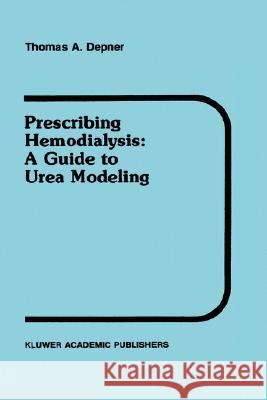Prescribing Hemodialysis: A Guide to Urea Modeling » książka
Prescribing Hemodialysis: A Guide to Urea Modeling
ISBN-13: 9780792308331 / Angielski / Twarda / 1990 / 292 str.
Prescribing Hemodialysis: A Guide to Urea Modeling
ISBN-13: 9780792308331 / Angielski / Twarda / 1990 / 292 str.
(netto: 1024,49 VAT: 5%)
Najniższa cena z 30 dni: 1068,24 zł
ok. 20 dni roboczych.
Darmowa dostawa!
What regulation shall we have for the operation? Shall a man transfuse he knows not what. to correct he knows not what. God knows how (l)? Dr. Henry Stubbs Royal College of Physicians circa 1670 If dialysis therapy were a new phannaceutical product being evaluated by the FDA now, it might not be approved for marketing. The recommended dose, its potential toxicity, the side effects of under-or over-dialysis as well as its efficacy have been the subject of very few studies. The high mortality rate associated with the treatment may raise a few eyebrows. That it is a life-saving modality of treatment is undoubtedly true for more than 100,000 patients in the United States and for more than a million patients world wide. Because dialysis has extended the lives of many people by a variable period of time, most nephrologists have "rested on their laurels" and did not vigorously pursue studies to optimize these treatments. But facts have a way of intruding in all our lives and the facts are that the overall mortality rate of dialysis patients in the United States is rising and stands close to 25% per year and is closer to 33% per year for patients between the ages of 65 and 74 (2). These mortality figures are considerably higher for age-adjusted dialysis populations in Europe and particu larly in Japan, and certainly for the age-adjusted nonnal population."











